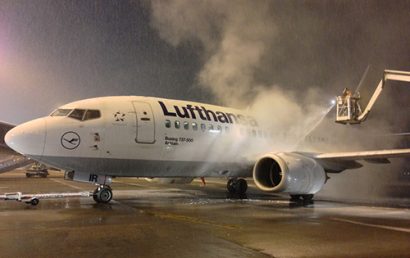Are You Familiar With Common Terms Used In The Thermal Spray Industry?
In order to have even a partial understanding of anything, it is helpful to be familiar with some of the terms and phrases used when referring to it. In the thermal spray industry, there are all sorts of technological terms that some individuals may or may not find confusing.
After all, if you are unfamiliar with the industry itself, why would any of these terms mean anything to you? In order to further your understanding of the thermal spray industry, here is a list of commonly used terms and phrases.
- Thermal Spray – a combination of processes during which finely divided nonmetallic or metallic surfacing materials are applied in a semi-molten or molten condition on a surface. A spray deposit is formed. The material used for surfacing may be in the form of wire, cord, rod, or powder.
- Super Finishing – the use of industrial diamonds or other designated abrasive to remove chatter and hone or polish a surface
- Spray Angle – measured from the access of the spray nozzle to the surface of the substrate, it is the angle of particle impingement.
- Plasma Spray – this is a process of thermal spraying. In this process, the coating material is propelled onto the workpiece through the ionization of gas after being heated by a source that utilizes a non-transferred arc.
- Tungsten Carbide Coating – used in abrasives, wear resistant machine parts, dies, and tools, it is a fine, gray, extremely hard powder with a WC composition (tungsten carbide).
- Metal Coating – techniques used for surfacing of a base material. This adds precise properties to the surface such as optical characteristics, wear resistance, oxidation resistance, corrosion resistance, etc.
- Abrasion Resistant Coatings – when a material needs to be wear resistant, this property is applied. Abrasion resistant materials are useful when the possibility of damage and mechanical wearing is present. These coatings permit the material to hold its form and retain its integrity which can be of the utmost importance when the material’s form is essential to proper functionality.
- Abrasive Blasting – this is a cleaning process necessary in order for some protective coatings to be able to ahere to the surface to which they are being applied. It is a technique that removes interface oxides and increases surface area.
- Industrial Coatings – though coatings can provide both aesthetics and protection, they are defined by their properties of protection.
- HVOF Coatings – this stands for High Velocity Oxygen Fuel and is a spray process using a high velocity flame.
- High-Pressure Cold Spray – dense composite coatings, alloys, and phase pure metals are produced by this system. Similar to the thermal spray process in bonding strength, these coatings are applied on various polymer substrates, alloys, and metals.
- Hard Coating – almost as hard as glass itself, this coating is dielectric and applied to plastic optics and glass.
- Alumina – aluminum oxide. This ceramic can be used as a blasting medium or used in rod form or in powder applications of thermal spraying.
- Fretting – this happens when surfaces come into contact under pressure and damage to the surface results from that motion.
- Flame Spray Coating – this is another process of thermal spraying. In order to melt the surfacing material, a heat source utilizing a gas flame (oxygen/fuel) is used. In order to propel the material being used for surfacing and for atomizing, a compressed gas might, but not necessarily, be used.
- Electric Arc Spraying – a process for thermal spraying in which the heat source is an arc. To propel the surfacing material and for atomizing, a compressed gas is used.
- Cold Spray – coating powder particles are gas jet accelerated in a supersonic manner in this spray process.
- Ceramic Coating – this coating offers metal protection against temperatures higher than 1100°C. It is a coating that is inorganic and nonmetallic comprised of zirconium oxide, aluminum oxide, or an intermetallic compound cemented coating.
- Bond Strength – expressed in psi, it is the force needed to pull the coating off of a surface to which it has been applied.
If you have questions or concerns about protective coatings, the people at A&A Coatings can be of assistance.



